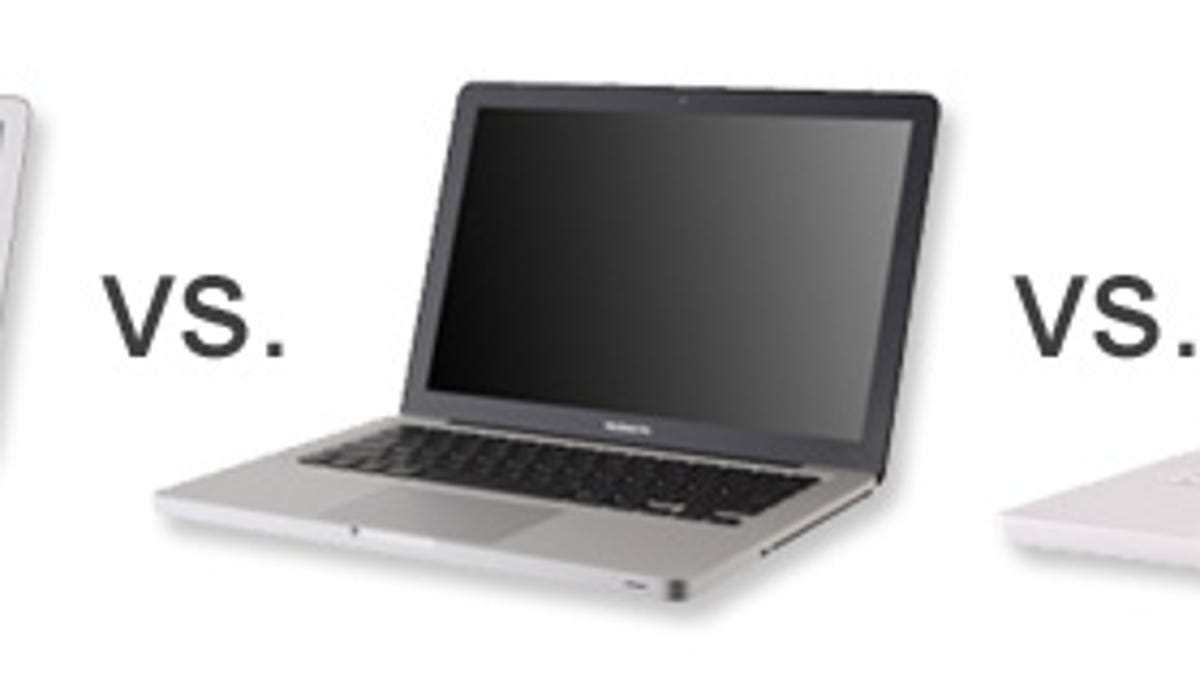MacBook Pro vs. MacBook Air vs. white MacBook: Which 13-inch Apple laptop should you buy?
We look at the most-recent 13-inch laptops from Apple.

In contrast to the dozens of models offered by some Windows vendors, Apple's streamlined product line can be liberating for those who want an easier time deciding what computer to buy. That said, Apple does offer no fewer than three different models of 13-inch laptop: the white "classic" MacBook, the MacBook Air, and the MacBook Pro. Two of those--the Air and the Pro--come in two different stock configurations (with additional tweaks available via Apple's Web site).
That's five 13-inchers, for those keeping count at home. Their starting prices range from $999 up to $1,499. So, which one is best for you?
The
For those who want the best computer for the money, fingers point to that same
If thinness and swift start-up times truly matter, the
Now to the benchmarks, including battery life.
(Shorter bars indicate better performance)
(Shorter bars indicate better performance)
(Shorter bars indicate better performance)
(Longer bars indicate better performance)
CPU performance: The clear performance winners are the second-gen Intel Core i-series MacBook Pros, which fairly trounce the Air (and also the older white MacBook). Interestingly, the MacBook Air's performance in single-task benchmarks isn't all that different from the basic MacBook's, lending it that "feels like a normal laptop" experience. In multitasking, however, it's less than half as efficient.
Edge:
Graphics: Last year's Core 2 Duo 13-inch MacBook Pro ran our Mac-based Call of Duty 4 test at 36.3 frames per second at native resolution, compared with 48.3fps in the white MacBook and 40.5fps in the MacBook Air, all using Nvidia's low-end GeForce 320M graphics. The new Intel HD 3000 integrated graphics on the 13-inch Pros are actually less robust than the Nvidia graphics in the other 13-inch models. Note that the 15-inch Pros all include AMD discrete graphics, which would easily best any of these.
Edge:
Battery life: This favors the more powerful MacBook Pros. They approached 7 hours of battery life, compared with a little under 5 hours from the Air. Sure, the Air is thinner and lighter, but 100-plus minutes of extra time away from an outlet is a big difference. Intel would claim this is because of the efficiency of its new Sandy Bridge processor platform, and so far that seems to be the case.
Edge:
And now, some recommendations on a case-by-case basis.
You want the best value for the money: Take the
You're a coffee-shop worker and frequent traveler, an "iPad man": Choose the
You're a student who needs to save money, but wants a Mac: The
Money is no object, you want the best computer: Get the step-up
You're an executive with an expense account: Spring for the $1,599 256GB SSD
Overall, you could make a strong case out of these results that the
In the future, we hope Apple will streamline its 13-inch offerings somewhat to make this less of a laptop logjam.
Read our reviews:

